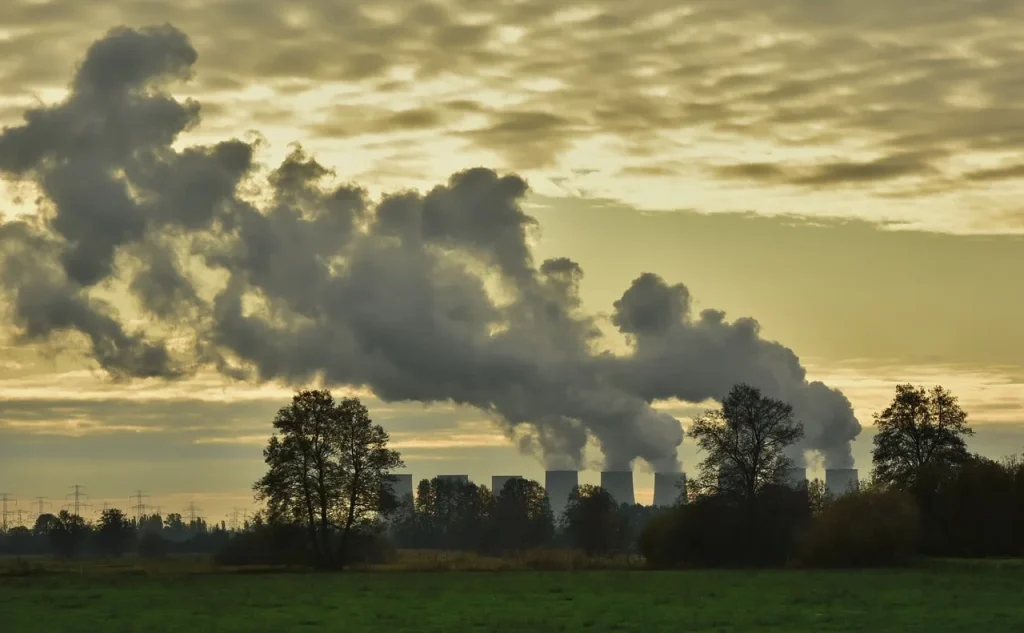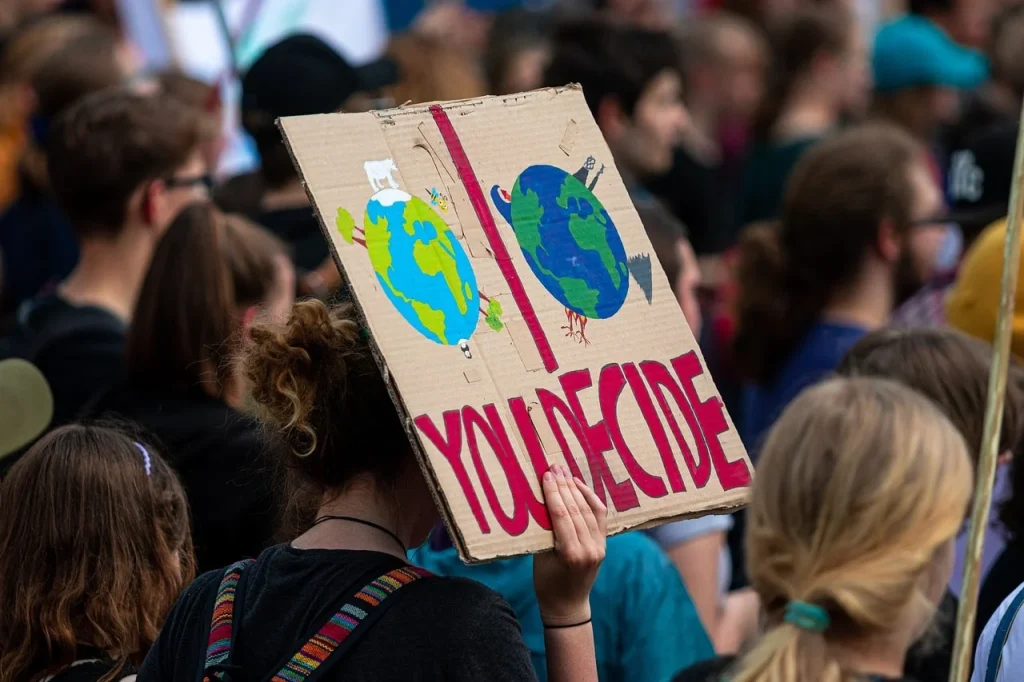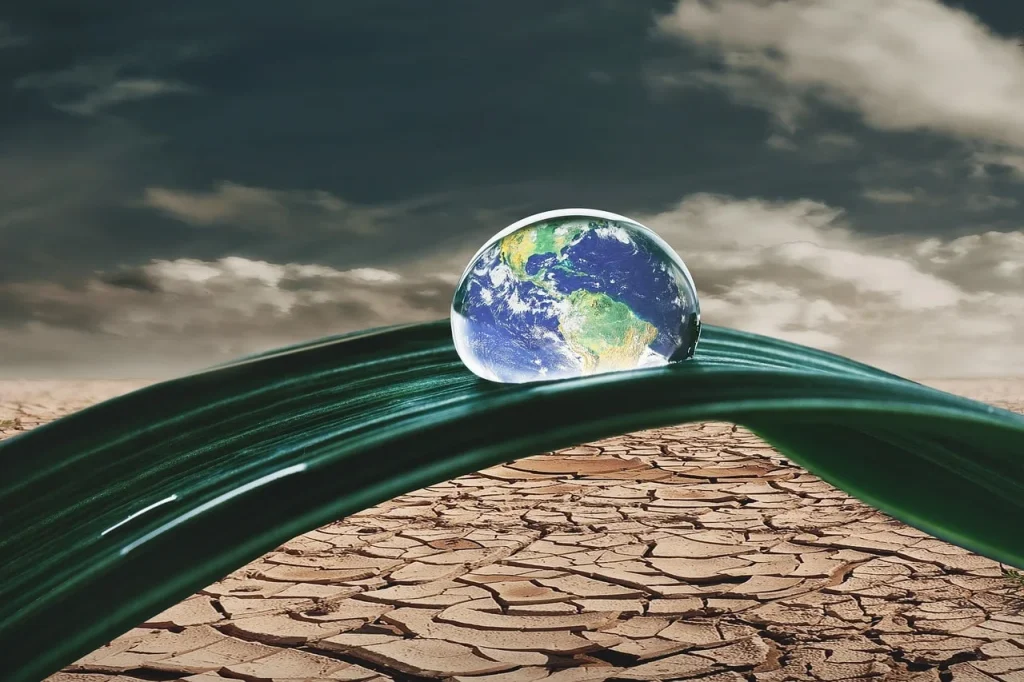Climate change is not just a distant threat; it’s a reality that’s impacting us here and now. In this page, we’ll explore some important facts about climate change, shedding light on how it’s altering our planet.
From disrupted ecosystems to human health risks, understanding these facts will equip you with the knowledge to contribute to a healthier planet. Get ready to be informed and empowered to make a difference.
The Earth is what we all have in common.
Wendell Berry
Climate Change Facts
Climate change is reshaping our world at an unprecedented rate, and understanding the facts is crucial. Read carefully, as a quiz at the end will test your knowledge.
- Oceans are absorbing almost 93% of the excess heat from greenhouse gas emissions.
- Deforestation in the Amazon rainforest can alter weather patterns globally, affecting even the water cycle in California.
- Climate models predict that with each degree of warming, lightning strikes will increase by approximately 12%.
- Permafrost in the Arctic tundra stores over 1.5 trillion tons of carbon, twice as much carbon as currently in the atmosphere.
- The intensity and frequency of hurricanes and tropical storms have increased significantly due to warmer ocean temperatures.
- Flying one less round-trip transatlantic flight can save more carbon emissions than recycling at home for an entire year.
- By the year 2100, sea levels could rise by up to 1.2 meters, driven by melting ice sheets and thermal expansion.
- Peatlands cover only 3% of the world’s land surface but store 30% of all soil carbon.
- Cloud brightening, a form of geoengineering, proposes increasing the albedo of clouds to reflect more sunlight away from Earth.
- Wildfires have become five times more common since the 1970s due to hotter and drier conditions.
- Artificial Intelligence is being used to optimize energy use and reduce emissions in various industries, including transportation and manufacturing.
- The economic cost of air pollution-related health issues is projected to increase significantly, costing billions in healthcare.
- Agricultural pests are expanding their range northward, threatening food security due to warming climates.

- Antarctica’s Thwaites Glacier, also known as the “Doomsday Glacier,” has the potential to raise sea levels by several feet.
- The Great Barrier Reef has lost half of its corals since 1995 due to coral bleaching from warmer sea temperatures.
- Climate stress is linked to an increase in mental health issues, including anxiety and depression.
- Renewable energy sources now account for about 30% of the world’s total power capacity.
- Greenland’s ice sheet is currently losing ice six times faster than in the 1980s.
- Carbon capture and storage technologies can theoretically remove up to 90% of carbon dioxide emissions from power plants.
- The transport sector accounts for approximately 25% of global carbon dioxide emissions.
- More than 20% of Earth’s freshwater fish species are at risk of extinction due to altered water temperatures and flow patterns.
- Climate anomalies have been linked to the collapse of several ancient civilizations, including the Akkadian Empire and the Maya.
- Solar radiation management could theoretically cool the Earth but doesn’t address ocean acidification caused by excess carbon dioxide.
- Thermal expansion of the ocean has contributed to about half of the observed rise in sea level since 1900.
- Light-absorbing particles from air pollution, such as black carbon, accelerate glacier and arctic ice melting.
- Microplastics can be found in the Arctic snow, indicating that they are being carried vast distances by winds and water currents.
- Migratory birds are changing their migration patterns and timing due to changing weather patterns, impacting ecosystems globally.
- Ice loss from Greenland and Antarctica has been tracked from space by satellites, showing unprecedented rates of ice melt.

- More than 1,000 cities worldwide have declared a climate emergency, committing to action plans to mitigate climate impacts.
- Vast areas of the Siberian permafrost are expected to thaw by 2050, potentially releasing large amounts of greenhouse gases.
- The concept of a carbon budget is used to estimate how much CO2 humanity can emit while limiting warming to 1.5°C above pre-industrial levels.
- Climate-driven phenological changes are causing plants to flower earlier, which can disrupt the timing of ecosystems.
- Energy efficiency improvements in buildings and transport are seen as key strategies to reduce overall energy consumption.
- Financial markets are increasingly factoring in climate risks, affecting the valuation of trillions of dollars in assets.
- Climate adaptation strategies are becoming as critical as mitigation efforts, focusing on resilience to current and future climate impacts.
- Desertification and land degradation threaten to displace up to 50 million people within the next decade.
- Seasonal human migration patterns are becoming increasingly influenced by climate extremes, such as heatwaves and droughts.
- The loss of biodiversity due to habitat shifts and ecosystem disruptions is occurring at a rate unseen in human history.

- Cloud forests are particularly vulnerable to climate change, with many species at risk of extinction due to habitat loss.
- Public health issues linked to climate change include the spread of vector-borne diseases like malaria and dengue fever.
- Hydropower, although a renewable energy source, faces challenges such as reduced water availability and increased conflict over water resources.
- Ocean acidification, often called “climate change’s equally evil twin,” threatens marine life, especially shellfish and coral reefs.
- Annual flood events are projected to increase, affecting hundreds of millions of people by 2050, particularly in Asia.
- The first known mass extinction event, the Great Dying, was likely driven by massive volcanic emissions that altered the climate dramatically.
- Green bonds and other financial instruments are increasingly being used to fund projects that aim to address environmental issues.
- Remote Indigenous communities are among the most affected by climate impacts, often facing the most direct threats to their way of life.
- Nations are turning to the oceans for carbon sequestration opportunities, exploring methods like algae farming and artificial upwelling.
- The decline in Arctic sea ice is influencing weather patterns as far south as the equator, altering jet streams and precipitation patterns.
- Soil degradation and erosion caused by intensive agriculture are both exacerbated by extreme weather events, threatening global food security.
- Energy derived from wave and tidal movements is being developed as a predictable and consistent renewable energy source, yet it remains underutilized globally.
Climate Change Myths

Now that we’ve explored the facts, it’s time to tackle the myths. Let’s separate what’s true from what’s not.
- Climate change only affects polar regions.
Climate change impacts every part of the world, not just polar areas. Rising temperatures, more extreme weather, and changes in rainfall patterns affect agriculture, water supplies, and human health globally. - Natural processes are the main cause of current warming.
While Earth’s climate has changed due to natural factors in the past, the rapid warming seen now is mainly due to human activities, especially the burning of fossil fuels that release large amounts of greenhouse gases. - There’s no consensus among scientists about climate change.
An overwhelming majority of climate scientists—more than 97%—agree that human activities are causing global warming and climate change. This consensus is based on extensive research and data analysis. - Global warming stopped over the last decade.
Despite some year-to-year fluctuations due to natural climate variability, the long-term trend shows that the Earth’s average surface temperature is steadily rising. Short-term pauses don’t negate the long-term upward trend. - Planting trees alone can solve global warming.
While trees absorb CO2 and help mitigate climate change, they cannot solve global warming on their own. We also need significant reductions in greenhouse gas emissions and advancements in renewable energy technologies to address the crisis effectively.
Climate Change Quotes

Let’s continue our journey with some quotes. You can always share more in the comments so I can add them to the list.
Climate change is no longer some far-off problem; it is happening here, it is happening now.
Barack Obama
Barack Obama emphasizes the urgency and immediate impacts of climate change with this quote, advocating for swift action to mitigate its effects.
I don’t want you to be hopeful. I want you to panic. I want you to feel the fear I feel every day. And then I want you to act.
Greta Thunberg
Greta Thunberg, a young climate activist, uses this powerful statement to provoke a strong emotional response and inspire immediate action against climate change.
We are the first generation to feel the effect of climate change and the last generation who can do something about it.
Barack Obama
This quote by Barack Obama highlights the critical window of opportunity that today’s generation has to address the challenges of climate change effectively.
In the end, we will conserve only what we love, we will love only what we understand, and we will understand only what we are taught.
Baba Dioum
Baba Dioum, a Senegalese forestry engineer, beautifully links education, understanding, love, and conservation in his quote, stressing the importance of environmental education.
Saving our planet, lifting people out of poverty, advancing economic growth… these are one and the same fight.
Ban Ki-moon
Ban Ki-moon, the former Secretary-General of the United Nations, connects the dots between climate action, poverty alleviation, and economic development, advocating for integrated solutions to global challenges.
Climate Change FAQ

As we move from the impactful quotes on climate change, we approach the FAQ section. Read carefully; these details are crucial for the upcoming quiz.
- Are climate change and global warming the same?
No, they’re related but not the same. Global warming refers to the rising temperatures of Earth’s surface mainly due to the increase in greenhouse gases. Climate change includes global warming but also encompasses other changes like altered weather patterns, sea levels, and different impacts on wildlife and ecosystems. - Can climate change be reversed?
While we can’t completely reverse it, we can mitigate its effects by reducing greenhouse gas emissions, protecting and restoring ecosystems, and transitioning to renewable energy sources. Every small action can contribute to a larger difference. - How does climate change affect human health?
Climate change impacts health in several ways. It increases the frequency and intensity of heatwaves, contributes to poor air quality, and can enhance the spread of diseases transmitted through water and insects. Extreme weather events like floods and hurricanes can also have direct impacts on human safety and health. - What can individuals do to combat climate change?
Individuals can help by reducing waste, using energy more efficiently, and choosing sustainable transportation options like biking or public transit. Eating a more plant-based diet and supporting local and sustainable food sources can also make a difference. - How does climate change affect wildlife?
It can alter the habitats and food sources of many species, forcing them to migrate or adapt. Unfortunately, not all species can cope with the rapid changes, leading to an increased risk of extinction for some.
Climate Change Trivia

Welcome to our climate change quiz! Remember, if you score zero, don’t be surprised if Mother Nature sends a personal rain cloud to follow you around for a week.
Conclusion
In conclusion, understanding climate change is crucial for our survival and well-being. We’ve seen how our planet is changing and the role we play in these changes. By taking action, whether big or small, we contribute to a healthier Earth.
It’s not just about saving the planet; it’s about ensuring a livable future for ourselves and generations to come. Till next time, stay curious and explore more. Cheers.
3 Sources Used For This ArticleGlobal Warming Quotes – The Random Vibez
Climate Change and Global Food Security – Medium


